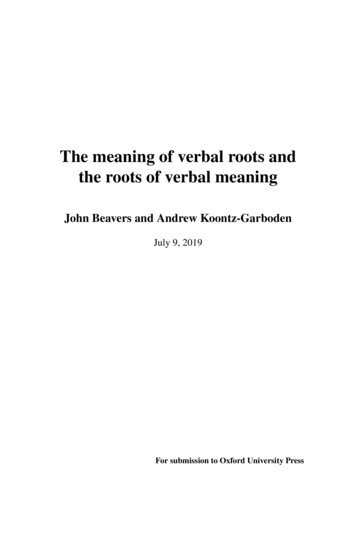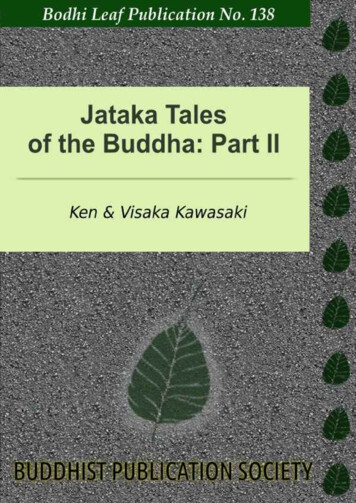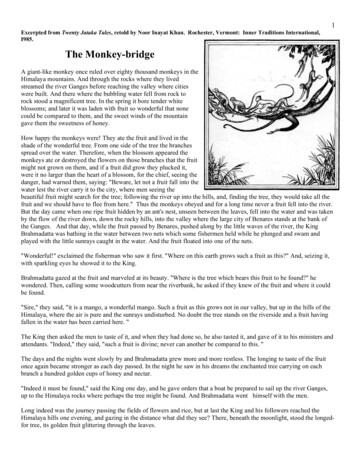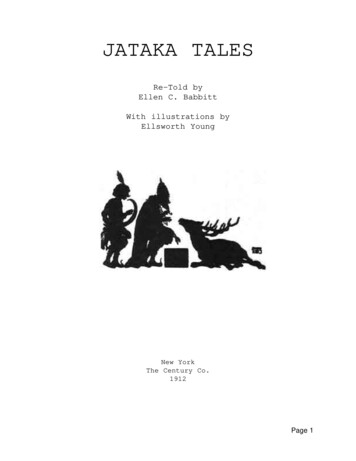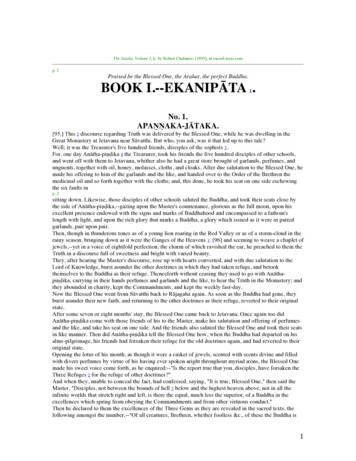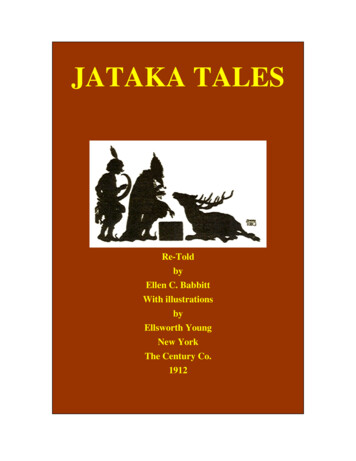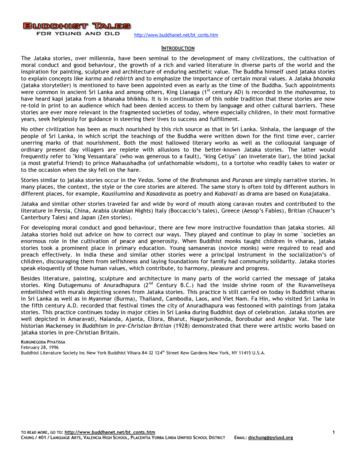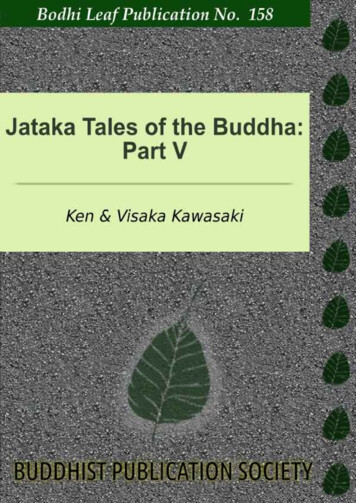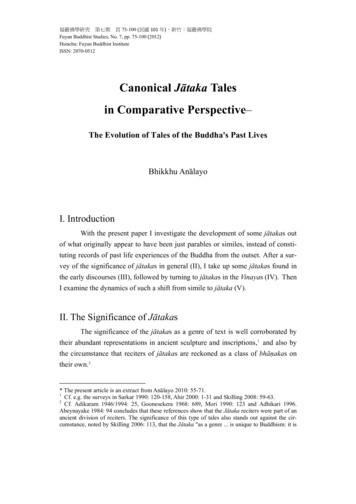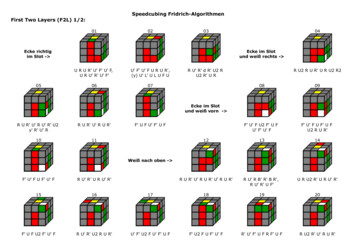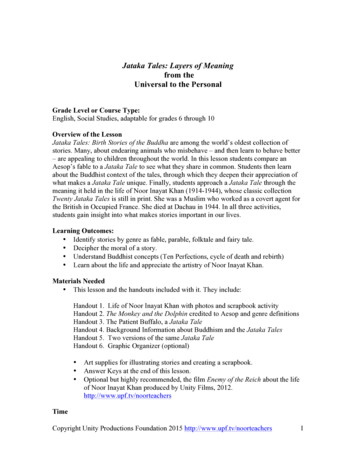
Transcription
Jataka Tales: Layers of Meaningfrom theUniversal to the PersonalGrade Level or Course Type:English, Social Studies, adaptable for grades 6 through 10Overview of the LessonJataka Tales: Birth Stories of the Buddha are among the world’s oldest collection ofstories. Many, about endearing animals who misbehave – and then learn to behave better– are appealing to children throughout the world. In this lesson students compare anAesop’s fable to a Jataka Tale to see what they share in common. Students then learnabout the Buddhist context of the tales, through which they deepen their appreciation ofwhat makes a Jataka Tale unique. Finally, students approach a Jataka Tale through themeaning it held in the life of Noor Inayat Khan (1914-1944), whose classic collectionTwenty Jataka Tales is still in print. She was a Muslim who worked as a covert agent forthe British in Occupied France. She died at Dachau in 1944. In all three activities,students gain insight into what makes stories important in our lives.Learning Outcomes: Identify stories by genre as fable, parable, folktale and fairy tale. Decipher the moral of a story. Understand Buddhist concepts (Ten Perfections, cycle of death and rebirth) Learn about the life and appreciate the artistry of Noor Inayat Khan.Materials Needed This lesson and the handouts included with it. They include:Handout 1. Life of Noor Inayat Khan with photos and scrapbook activityHandout 2. The Monkey and the Dolphin credited to Aesop and genre definitionsHandout 3. The Patient Buffalo, a Jataka TaleHandout 4. Background Information about Buddhism and the Jataka TalesHandout 5. Two versions of the same Jataka TaleHandout 6. Graphic Organizer (optional) Art supplies for illustrating stories and creating a scrapbook.Answer Keys at the end of this lesson.Optional but highly recommended, the film Enemy of the Reich about the lifeof Noor Inayat Khan produced by Unity Films, 2012.http://www.upf.tv/noorteachersTimeCopyright Unity Productions Foundation 2015 http://www.upf.tv/noorteachers1
Allow two class periods for each of the three activities. Each of these activitiescan be implemented independently of the others.Procedures/ActivitiesActivity 1: The Life of Noor Inayat KhanIntroduce the life of Noor Inayat Khan through asking students to look at six photographsof heri. These can be uploaded to a PowerPoint or projected from this ( for the entire classto view.Ask the following questions while students study the photographs. After each student’sresponse ask, “What in the photographs makes you think so?”Questions: Based on Noor Inayat Khan’s appearance, including her dress and hairdos, whenmight she have lived? Where might she have lived? What roles and careers might she have led in her lifetime? Was she well-to-do or wanting? Or both at different times? In which photograph is she youngest and in which oldest? What might this sayabout the progression of her life?Tell students that Noor Inayat Khan was a remarkable person who died during WorldWar II and that they are going to find out about Noor’s life. Distribute Handout 1: The Life of Noor Inayat Khan.Students can read about Noor’s life for homework. They should answer the questions thatfollow about her life in pairs during class time. Next complete Activity 1 by asking students to make a “scrapbook” of Noor’slife.Directions on Handout 1 read: Use the photographs to make a scrapbook of Noor’s life.Make a timeline of key events, based on the reading. Study the photographs closely forwhat they reflect about Noor’s character, life and probable age at the time. Then placethem in the order in which you think they were taken, and write a caption for each one in“Noor’s” handwriting. (If you wish you can add in other photographs about Noor or thetimes in which she lived and write captions for them as well.) Return to the opening activity. What did students accurately or inaccuratelysurmise about Noor based just on her photographs?Now that they have read about Noor, what most surprises students about the realNoor?Tell students that they are going to look at one of Noor’s lasting achievements,Copyright Unity Productions Foundation 2015 http://www.upf.tv/noorteachers2
her collection Twenty Jataka Tales with illustrations by H. Willebeek Le Mair,still in print today.Copyright Unity Productions Foundation 2015 http://www.upf.tv/noorteachers3
Activity 2: Comparing a Fable by Aesop to a Jataka TaleIntroduction to the Jataka Tales: Animals in LiteratureAsk the class to generate a list of their favorite animal characters in stories, includingfolktales, fairytales and books. Widen the sources to movies and TV if studentscannot generate a long list of print sources. A list might include such animal figuresas Babar the Elephant, Br’er Rabbit, Clifford the Big Red Dog, Peter Rabbit,Ferdinand the Bull, the monkey Curious George, the Lion King, Coyote, DonaldDuck and many others. What are the sources for some of these stories? Were they all intended forchildren? With the class, discuss some examples such as Br’er Rabbit tales,eventually written down by Joel Chandler Harris, but told among enslavedAfricans in America for generations. On the other hand, the story of Babar theElephant was imagined and written by one author, Jean de Brunhoff. Why do you think animal stories are universally popular? Generate a list ofpossible answers from the class. For example, we can identify with certain aspectsof particular species that we love, admire or fear. It might be easier to conveyboth positive and negative human characteristics when exemplified in animalform. Sometimes it is safer to tell a tale about animals than humans. In manytraditional animal tales a weaker animal overcomes a powerful one by using hiswits. Listening to such a tale would give hope to the downtrodden while maskingtheir anger at powerful human beings (landlord, slave owner) because the tale is“only about animals.” Stress that humans have observed and depended upon animal life for sources offood, clothing and labor on six continents. Which animals appear in tales dependsupon the human habitat. Tell students that they are going to study animal stories from the oldest andlargest collection of animal stories in human history, The Jataka Tales, whichoriginated in India beginning in the 3rd millennium, B.C.E. Before reading one ofthese, students will learn some techniques for analyzing an animal tale, whichthey can later compare to a Jataka Tale.Explain that animal stories can take many forms, and review these definitions.Explain that sometimes these definitions overlap to some extent.o Fairytale: A story for children in which magical forces appear, such as wizards,fairies and goblins.o Folktale: A story that was told orally among the folk, or common people.o Fable: A story, often about animals, which is intended to teach a moral aboutright and wrong.o Parable: A short story used to illustrate a moral or spiritual lesson (usually usedin reference to the New Testament of the Bible).Copyright Unity Productions Foundation 2015 http://www.upf.tv/noorteachers4
o Animal Story: A story for children, here meaning one that one author imaginedand wrote.Comparing Aesop’s Fable to a Jataka Tale Distribute Handout 2: A Fable Credited to Aesop. Note that in the version givento students this Aesop’s fable has no moral. Finding the moral of the story is thepurpose of the exercise. Students can complete the handout at home, or in smallgroups in class. Either way, conclude the class with a whole group discussion.Ask the class to share answers, justify them and choose the best moral for thestory. In the original, the moral is: One falsehood leads to another. Next distribute Handout 3: The Patient Buffalo, a Jataka Tale. Ask students toread through the tale as a first reading. Consider reading the story out loud to theclass; have pairs of students read it out loud to one another. Then ask students to fill in the Graphic Organizer about the story, insofar as theyare able with the information at hand. Now tell students, working in pairs, to fill in a Venn Diagram comparing theAesop’s fable to the Jataka Tale, based on this first reading. Distribute Handout 4: Background Information about Buddhism and the JatakaTales. Tell students that they are going to learn more about Jataka Tales and theirorigins. After learning more they will reread the story and add to their GraphicOrganizer in Handout 4. They can also use their textbooks to learn aboutBuddhism. On the Answer Key to Handout 4. (see below) additional insightsstudents may gain are listed in red. In addition, discuss with students which one of the Ten Perfections this tale bestexemplifies. What others may also apply and why?Extensions: Read more Jataka Tales and fill in additional Graphic Organizers for eachone. In each tale, which of the Ten Perfections is exemplified? Assign each student to illustrate one Jataka Tale.Debriefing Open for debate and discussion:o Are the Jataka Tales more like or more unlike Aesop’s Fables andwhy?o To appreciate and learn from a Jataka Tale, is it necessary tounderstand them as Buddhist texts? Why or why not?Copyright Unity Productions Foundation 2015 http://www.upf.tv/noorteachers5
o Drawing on what you have learned about Noor Inayat Khan and herreligious background, why do you think she included the Buddhistcontext for her collection of the stories?Activity 3: Noor Inayat Khan’s Life and The Monkey-bridge, A Jataka TaleNoor Inayat Khan collected twenty Jataka stories for her collection, still in print today(Twenty Jataka Tales). She acknowledges drawing on two collections for her own, onetranslated to English from Pali, their original language, and a second translated to Englishfrom Sanskrit (another sacred language of India).This part of the lesson addresses two essential questions: Why did she select The Monkey-Bridge for her collection; what meaning did ithave in her own life? What stands out about Noor’s literary style as she re-worked these tales forchildren? Note that if you did not implement Activity 1, assign the reading about Noor’slife in Handout 1.Distribute Handout 5. The Monkey-Bridge Students will read all of Ellen C. Babbitt’s version of “How the Monkey SavedHis Troop” and excerpts from Noor’s version entitled “The Monkey-bridge” inorder to compare them. Noor’s version is more sophisticated and literary. Hersentences are longer and more onomatopoetic. She uses simile and description,whereas Babbitt tell the story as directly as possible. Like the monkey Chief, Noor is ready to sacrifice her own life when she joins theBritish SOE for the benefit of others in the fight to end Nazi occupation ofEurope. Consider sharing this episode, recounted by Noor’s biographer Shrabani Basu.Before British cryptographer Leo Marks interviewed Noor to see if she was asuitable candidate for the SOE “ he read each of the twenty stories from theJataka Tales twice and knew one of them by heart. It was a story about a monkeychief who led 80,000 monkeys to their freedom by sacrificing himself andoffering his body as a bridge.”ii How do you think this tale gave Marks insightinto Noor’s commitment to her work as SOE agent?Answer KeysHandout 1: Noor’s Life What were the values of Noor’s father, Hazrat Inayat Khan? (He was a pacifist, hesought for commonalities among people of different faiths, he valued all humanlife.)Copyright Unity Productions Foundation 2015 http://www.upf.tv/noorteachers6
To how many countries did Noor’s travels take her? List them. (England, Russia,France, India, Netherlands, Spain, Italy, Switzerland) What subjects did Noor study in school? (Music, child psychology) In Noor’s stories for children, what topics did she draw on? In what ways did theyexpress her values? (She drew from many cultures, as did her father in his workand faith. These included French, Indian, and Norse.) What do you think motivated Noor to become a secret agent for the SOE? In whatways was she supporting her father’s values? In what ways contradicting them?(Hatred and persecution of other religions, like the Nazi persecution of the Jews,would have been abhorrent to her father. On the other hand, he was a pacifist,whereas his daughter entered the arena of war.) What do you think drew Noor to the Jataka tales? (It is hard to know. They werefrom a different religious tradition than hers, but well-known throughout hernative India. Her father was interested in finding commonalities among religions.Noor included a reference to Buddha in her introduction to the tales. They are alsosimilar to other tales she wrote that featured the natural world.) For what is Noor most remembered today? (Both the Jataka Tales and her workin the Resistance are remembered. She is being newly honored for her work in theResistance.)Answer Key for Handout 2.Graphic Organizer for Aesop’s fable, The Monkey and the DolphinA. Animal(s) B. PhysicalTitlefeaturesAuthorC.Personalitytraits intaleD. StoryGenreE. StoryOriginsMoral of theStoryThe Monkeyand theDolphinAesopMonkey:devious andmanipulative.Fablebecause it isshort, to thepoint, andhas one clearmoral aboutgood and badbehavior.AncientGreece; Athensis referred to.Aesop isbelieved to bethe author ofthe story.Do not lie:“Onefalsehoodleads toanother.”Monkey: humanlike but less thanhuman (smallerbrain, less agilelimbs)Dolphin: swims;intelligentDolphin:honest, wiseCopyright Unity Productions Foundation 2015 http://www.upf.tv/noorteachers7
Answer Key For Handout 3Graphic Organizer for The Patient BuffaloAdditional insights, after reading Handout 3. in red.A.Animal(s)TitleAuthorB. PhysicalfeaturesC.PersonalitytraitsD. StoryGenreE. StoryOriginsMoral/s of theStoryBuffalo andMonkey“The PatientBuffalo”Noor InayatKhan, TwentyJaktaka TalesBuffalo: giant,horns.Buffalo:patient, notvengeful.Refuses toharm monkey.Fable: shortwith a moralmessage.Jataka Talescome fromIndia.Patience will berewarded.Parable:because ofspiritualmessageAn earl
Jataka Tales: Layers of Meaning from the Universal to the Personal Grade Level or Course Type: English, Social Studies, adaptable for grades 6 through 10 Overview of the Lesson Jataka Tales: Birth Stories of the Buddha are among the world’s oldest collection of stories. Many, about endearing animals who misbehave – and then learn to behave better – are appealing to children throughout .
